By Louise Irvine
During Esther Underhay’s Elegant Harp recital at WMODA, her husband, Paul, challenged us to spot the harp in the Art Nouveau gallery. First, I pointed out Arion on a Seahorse but later realized that he is carrying a lyre, which is different. Then I noticed that the mosaic panel on the base of the Goldscheider Queen depicts a harp. The quest was on to discover more examples in our collection of ceramic art!
Early harps evolved from the huntsman’s bow and the harpist in the Goldscheider sculpture seems to be holding his instrument like a bow and arrow. The terracotta Queen was sculpted by Pecheur during the Art Nouveau era when there was a revival of interest in Celtic art. The triangular harp can be traced to Scotland in the 8th century, where examples were carved on stone crosses by the Picts.
The Celtic Harp
The harp was revered in Celtic culture. Kings and chieftains in Scotland and Ireland had their own resident harpist, who accompanied poetry and songs. In Medieval times, the pillar was added to the harp to support the tension of extra strings. Typically, the strings of Irish harps were made of brass and played with the fingernails. An Irish Harpist can be seen in our Royal Doulton gallery. This rare prototype figure, modeled by Bill Harper in 1974, did not go into production.
The Celtic harp became the official national symbol of Ireland When King Henry VIII declared himself King of Ireland in 1531. The harp was stamped onto the coinage, but this symbol of Irish pride quickly became an emblem of resistance. The harp was banned, and the tradition began to die out until its revival in the late 18th century. In more recent times, the Celtic harp has become famous as the logo for Guinness stout and subsequently their Harp lager. Celtic harps can be seen all over Ireland, from garden topiary to crystal paperweights by Waterford.
The Lyre
The lyre is very similar to the harp. The fundamental difference is that the harp strings enter directly into the hollow body of the instrument whereas the lyre strings pass over a bridge, which transmits vibrations. The Golden Lyre of Ur, which was discovered in 1929 in present-day Iraq, is more than 5,000 years old and is the oldest surviving stringed instrument in the world. According to classical myth, Arion was a brilliant lyre player and won a prestigious musical competition in Sicily. Returning home with his prize of gold, he was set upon by greedy sailors. They gave him the choice of suicide or being thrown into the sea to perish. To win time, Arion asked to sing, and he praised Apollo, the god of music and poetry. Arion’s sweet music attracted a number of dolphins around the ship. At the end of the song, Arion leaped overboard and was saved by one of the dolphins who carried him safely home. Arion is often shown riding on a dolphin in classical art. However, for the Lladró High Porcelain sculpture at WMODA, Francisco Polope has chosen to mount him on a Hippocampus or seahorse.
In classical art, Terpsichore the muse of dance and music, was often portrayed with a lyre. The KPM Berlin porcelain figure at WMODA features a lyre-playing muse accompanied by a putto. Calliope was the chief muse and presided over eloquence and epic poetry. She was the mother of Orpheus, who was taught how to play the lyre by Apollo. The music played by Orpheus had the ability to charm the animals as can be seen on the monumental Diana vase in the Royal Doulton gallery at WMODA. The scene was painted by Joseph Hancock on fine bone china for the Paris exhibition of 1900.
The Wings of Angels
Gothic harps, which resemble the wings of angels, became the classic style during the Renaissance. They are also known as Bray harps because they bray like a donkey. The instrument gradually became more sophisticated with the introduction of pedals to modify the pitch. The single action harp became very popular at the French court in the 1700s and Queen Marie Antoinette was the most famous player. These aristocratic instruments were lavishly carved and gilded for the elegant salons of the era as can be seen in Royal Doulton’s Harp Player, which was modeled by Peggy Davies in 1973. Peggy studied famous paintings to ensure the precise finger movements and she studied the musical instrument collection at the Victoria & Albert Museum in London. The miniature metal harp in the figurine was based on a design by George Cousineau, harp-maker to Queen Marie Antoinette. The most unlikely harp player in the Doulton gallery is a mouse modeled by George Tinworth at the Lambeth studio in London. He produced several salt-glaze stoneware menu holders featuring musical mice in the 1880s.
The Concert Grand
The Double Action pedal harp was patented by Sebastian Erard in 1810 making the concert harp fully chromatic and able to play a wide range of the classical repertoire of the orchestra. One of the most famous players of the concert harp was Harpo Marx, who would perform zany slapstick comedy with his brothers and then play beautiful music. Watch Harpo Marx play the harp in 1945.
The gorgeous harp played by Esther Underhay in her The Elegant Harp performance at WMODA is a Lyon & Healy concert harp made in Chicago. This special order semi-grand harp takes an artisan six months to make.
Tune in for the premiere of Esther’s virtual performance at WMODA produced by Steven Lynch of LSS video.
Watch Here!
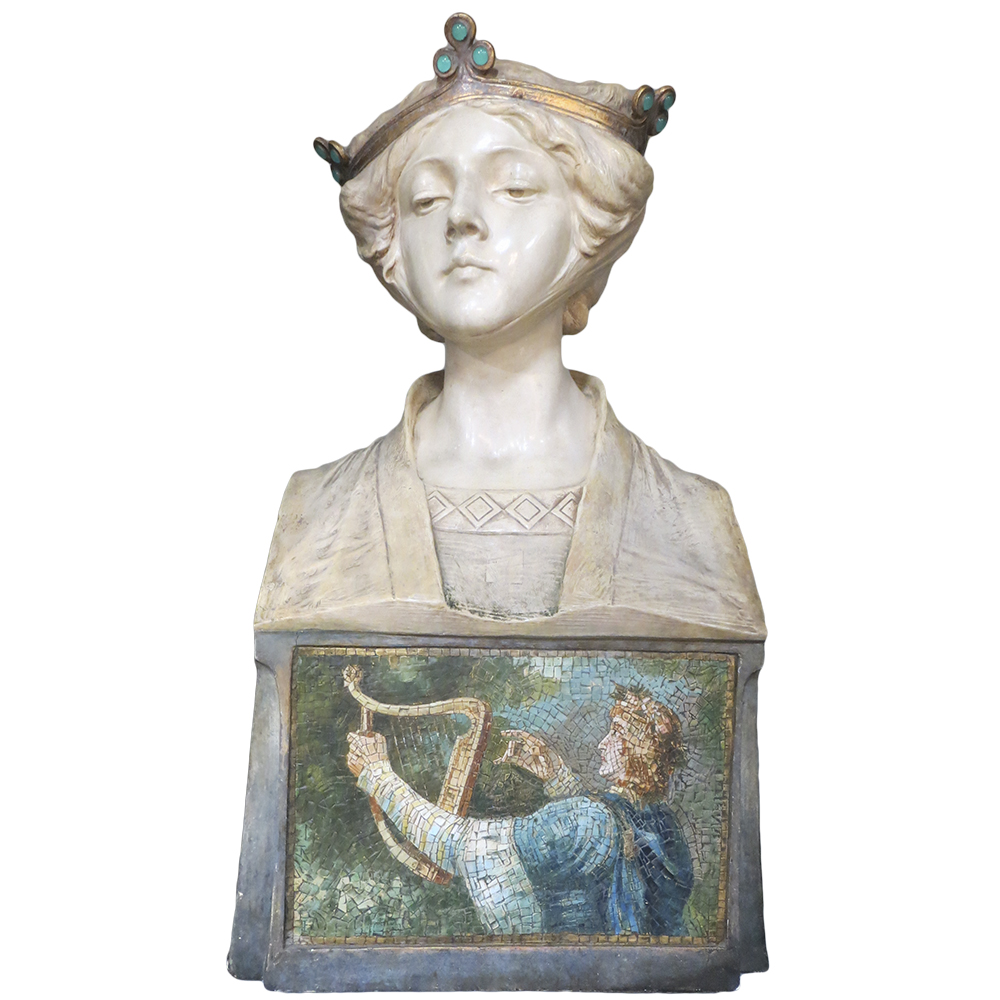
Goldscheider Queen
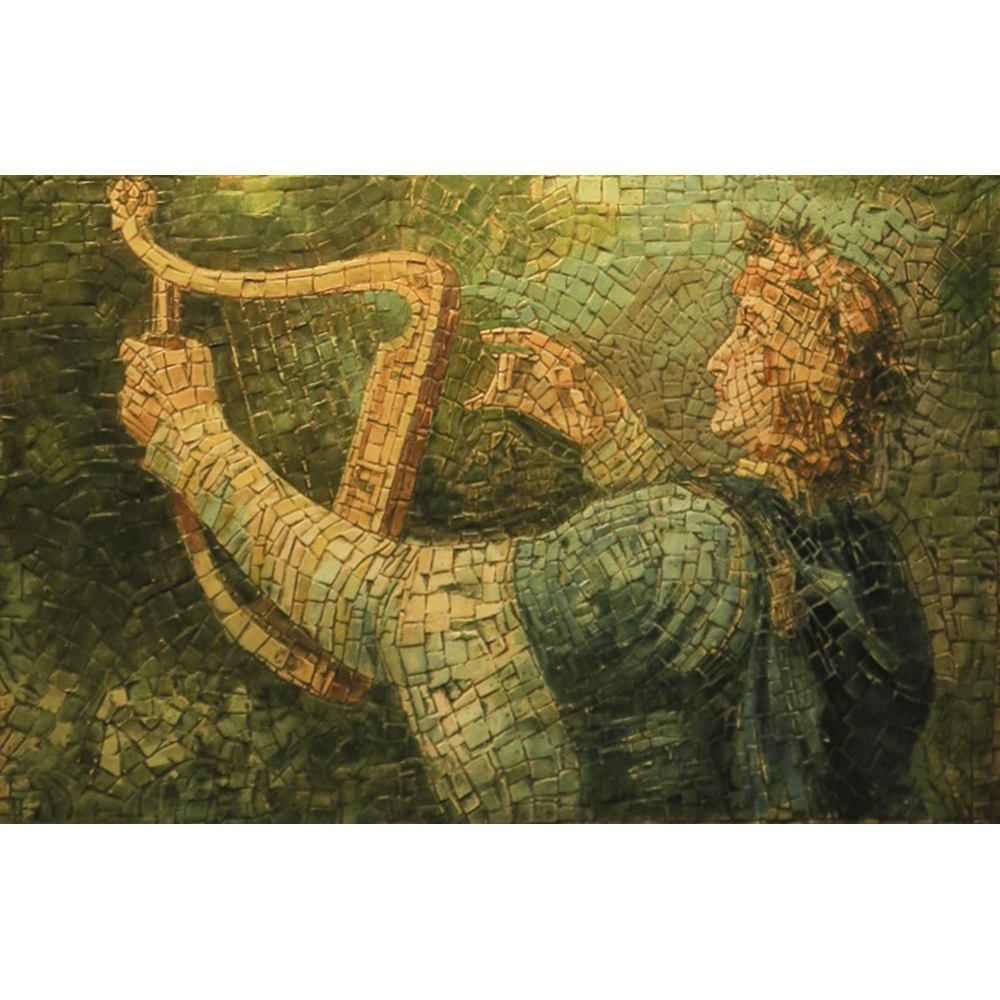
Queen detail
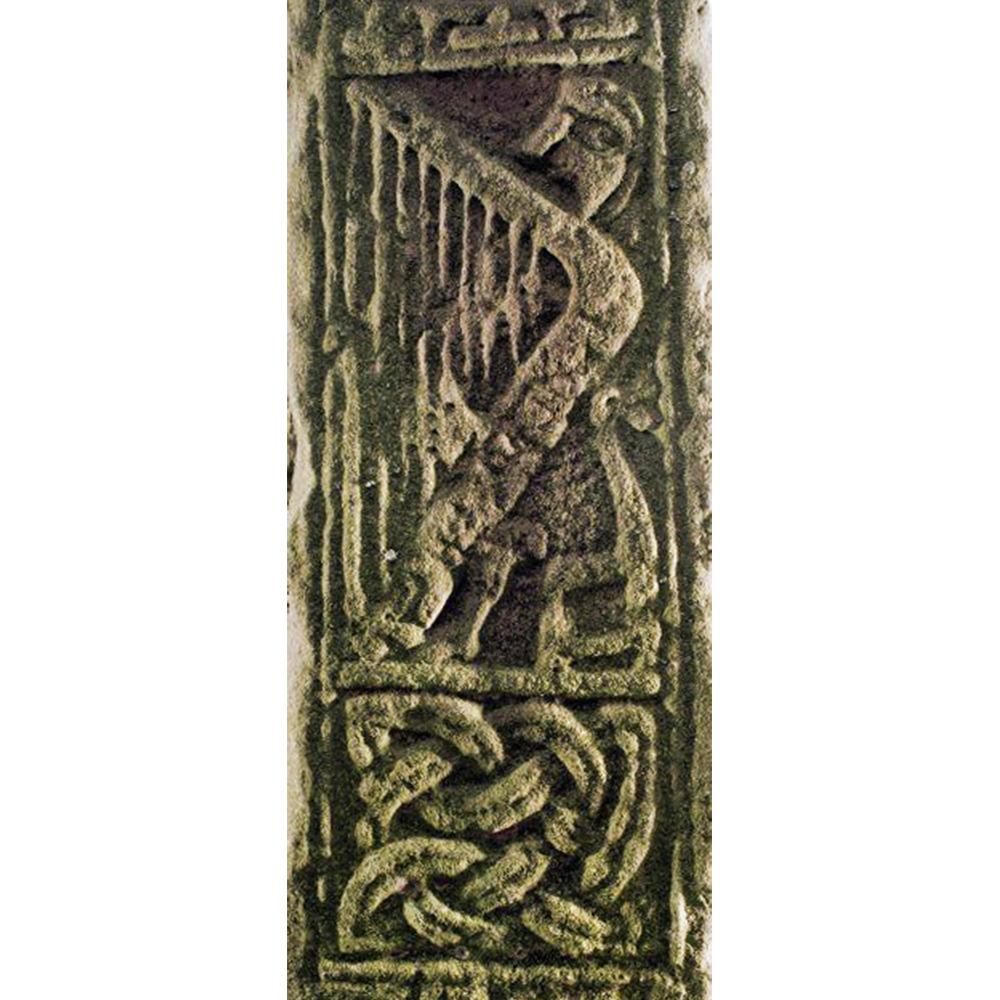
Dupplin Cross
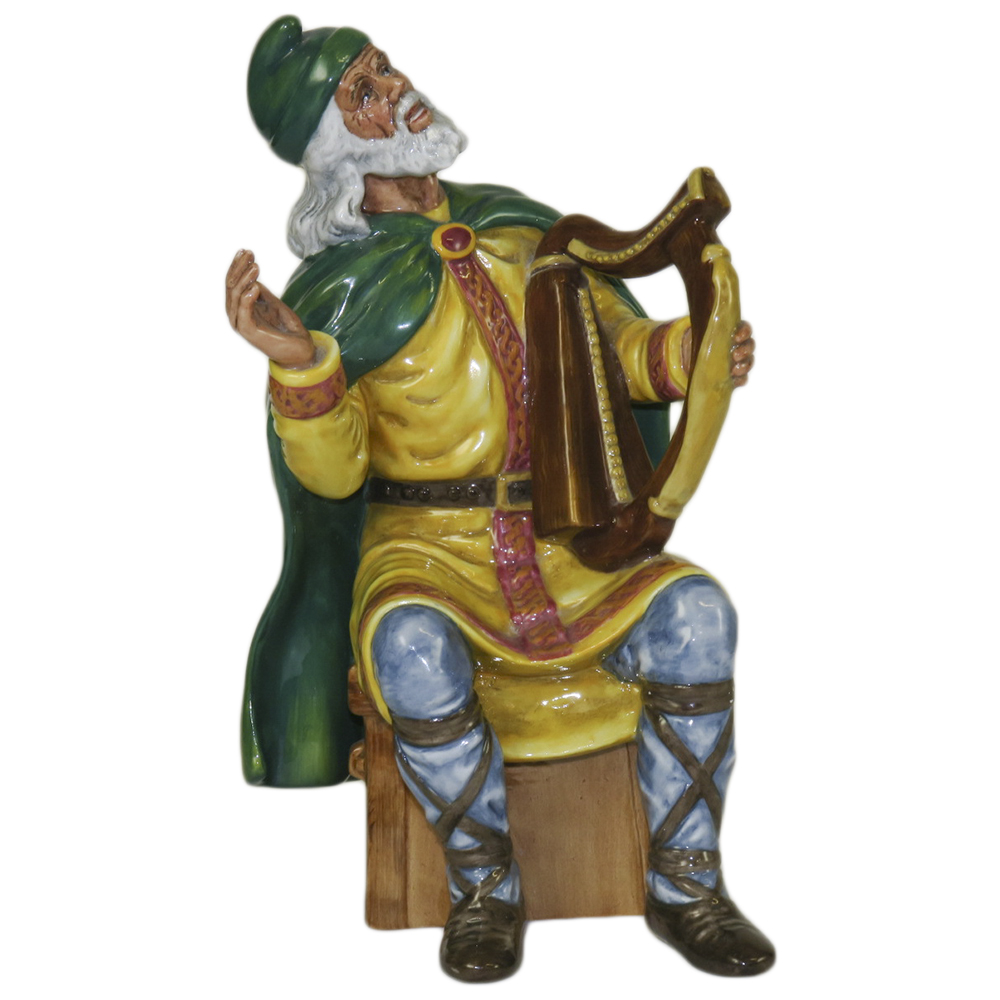
Royal Doulton Irish Harpist by W.K. Harper
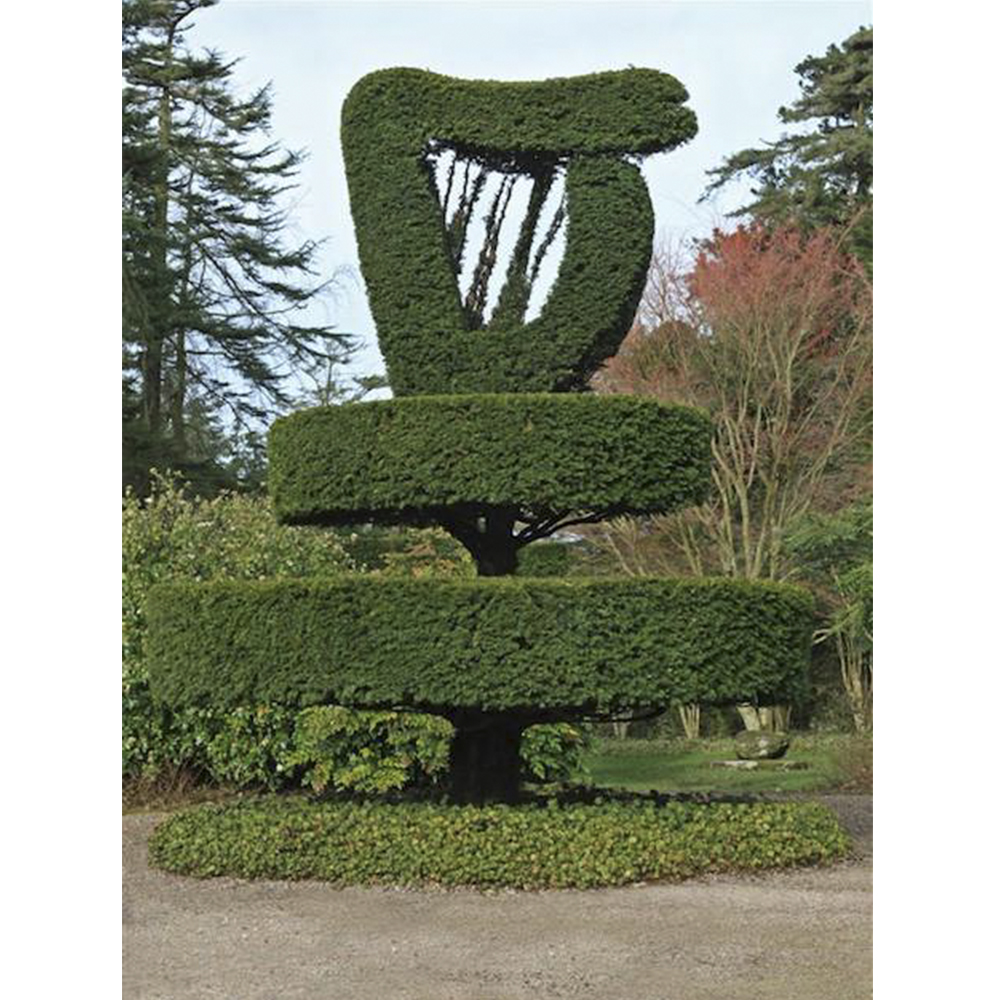
Topiary Harp at Mount Stewart
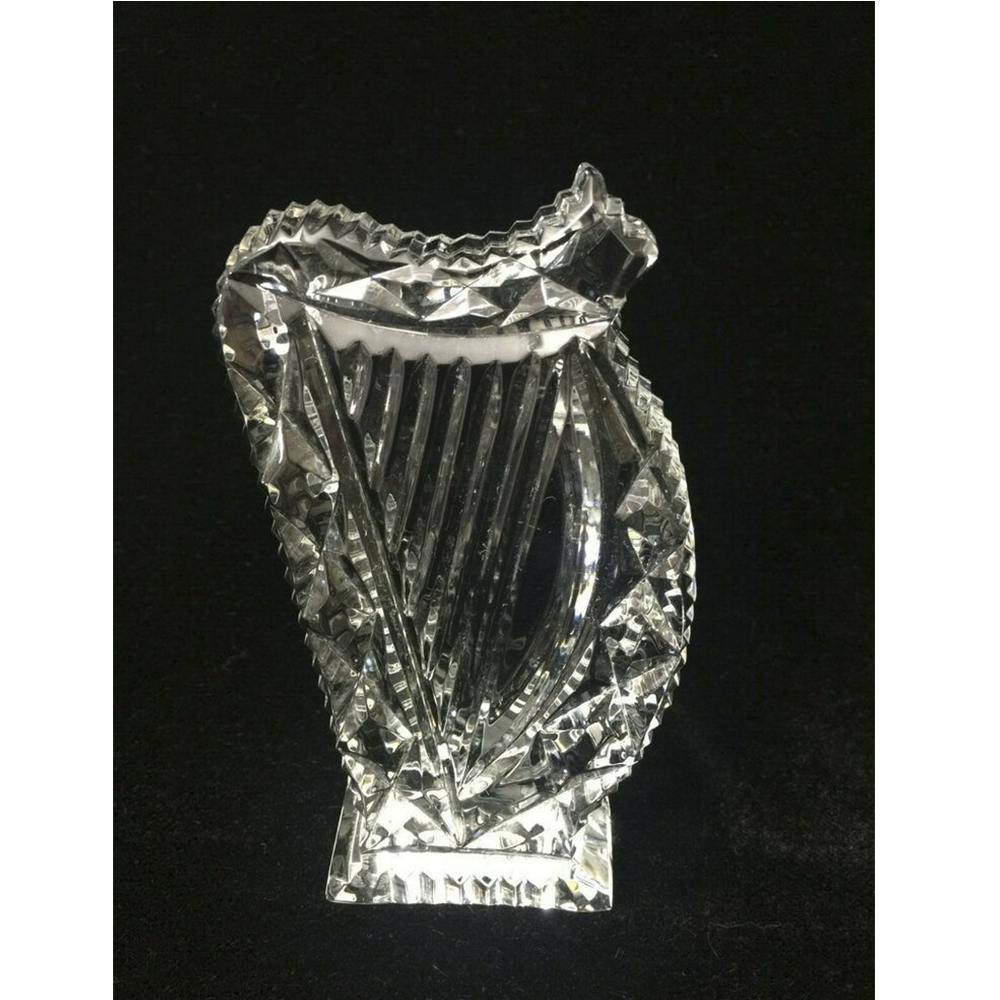
Waterford Crystal Paperweight
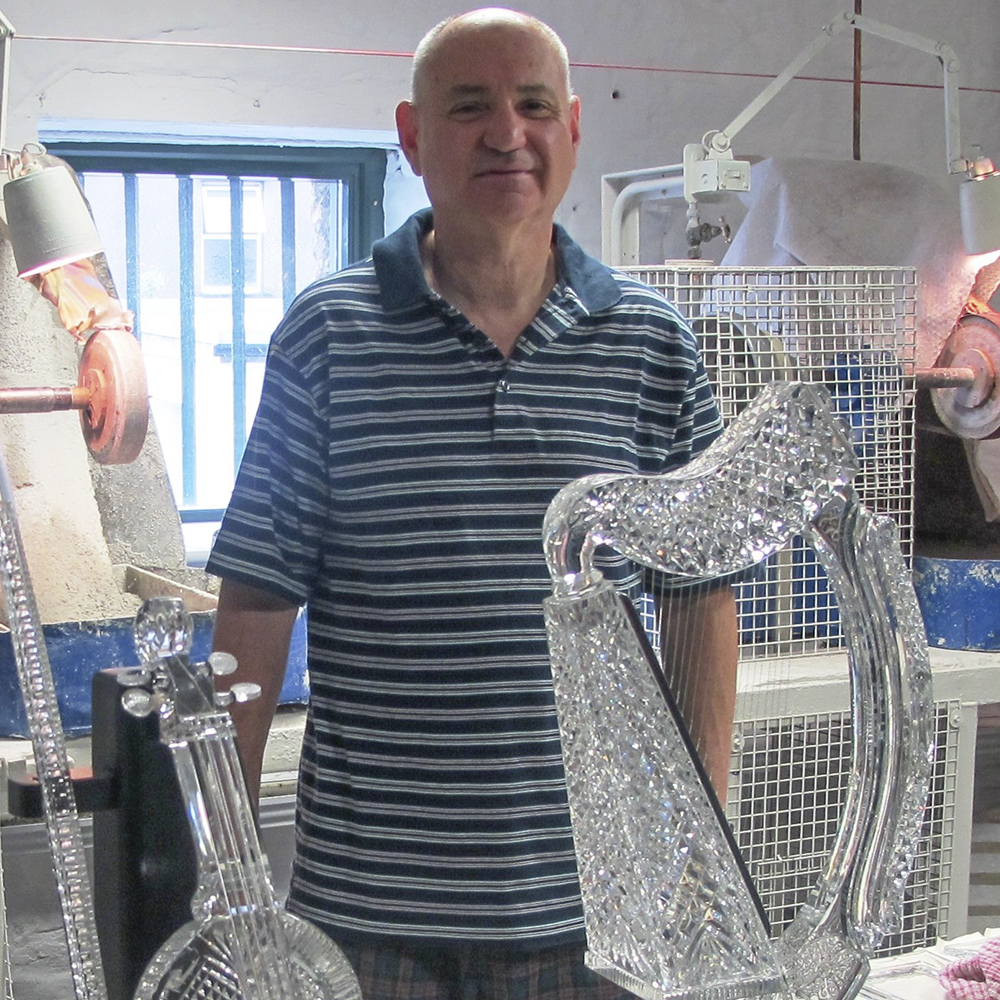
Arthur Wiener with a Waterford Crystal Harp

Guinness Logo
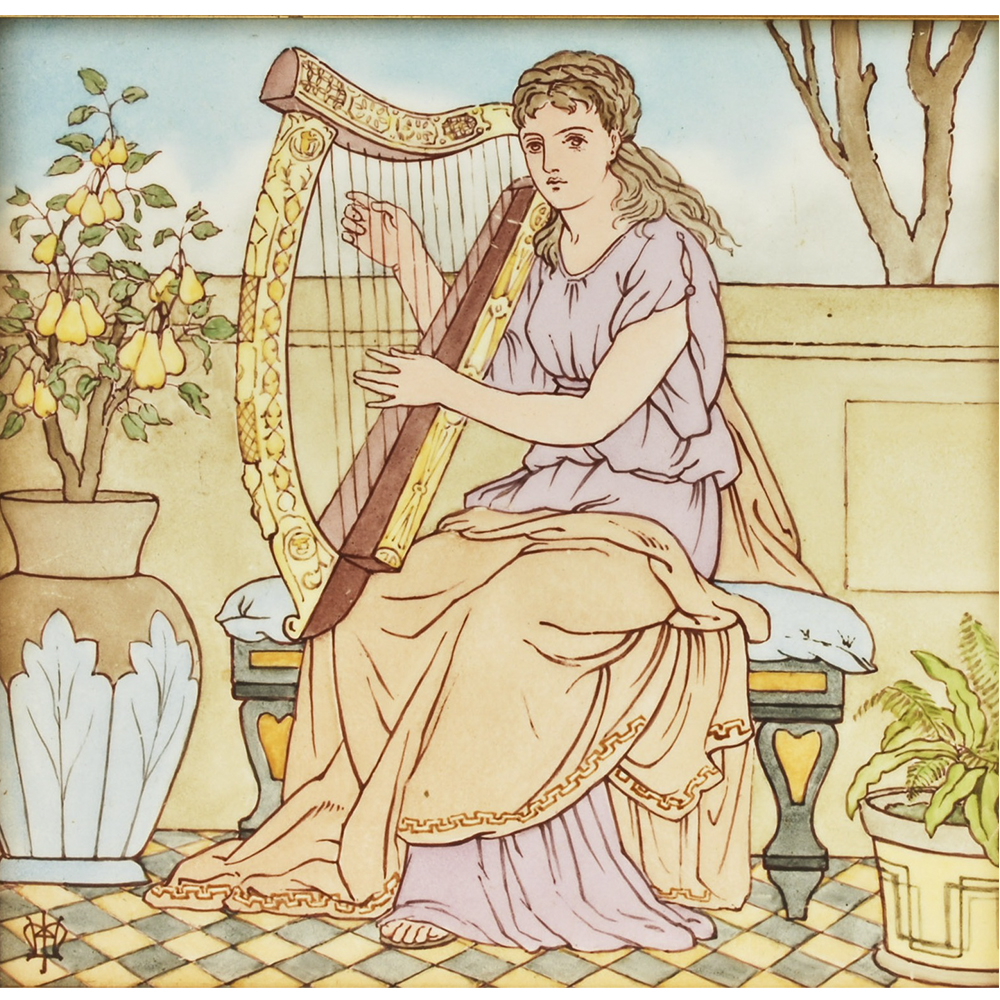
Doulton Faience Harp Tile H. J. Miles
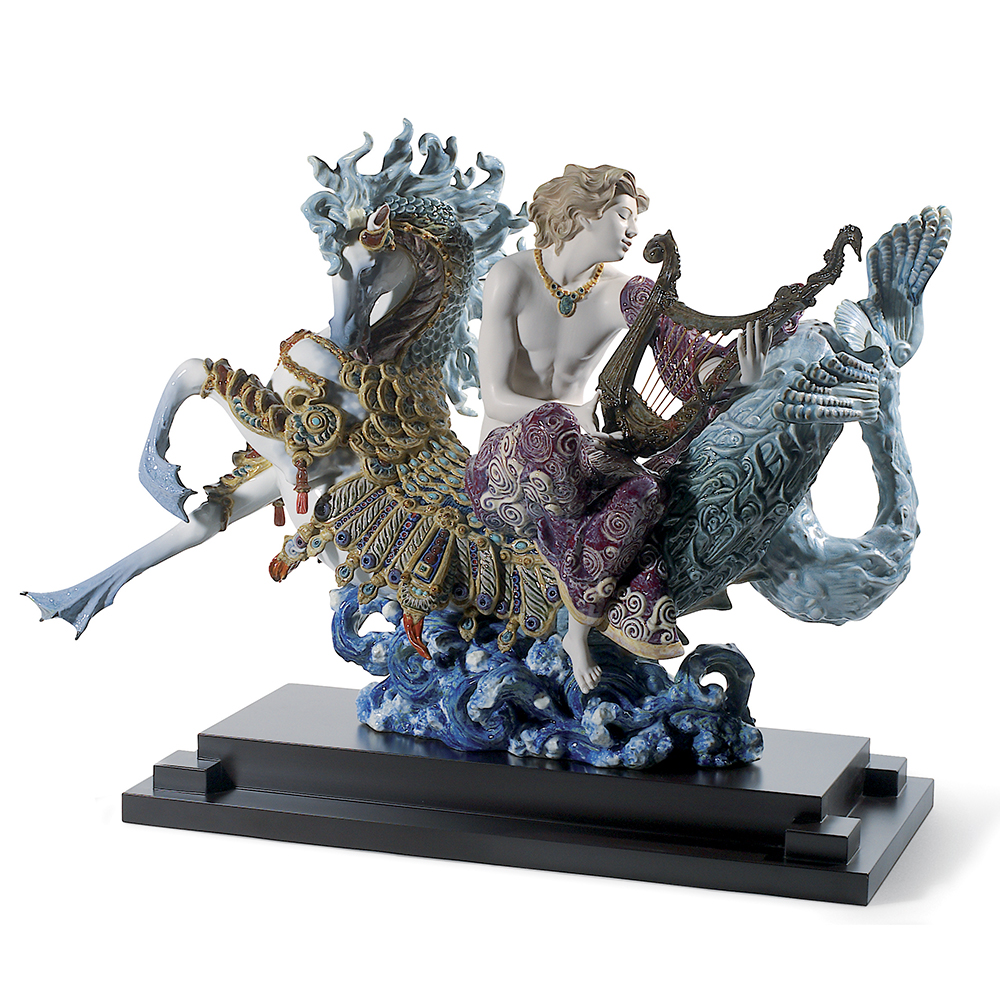
Lladró Arion on a Seahorse by F. Polope
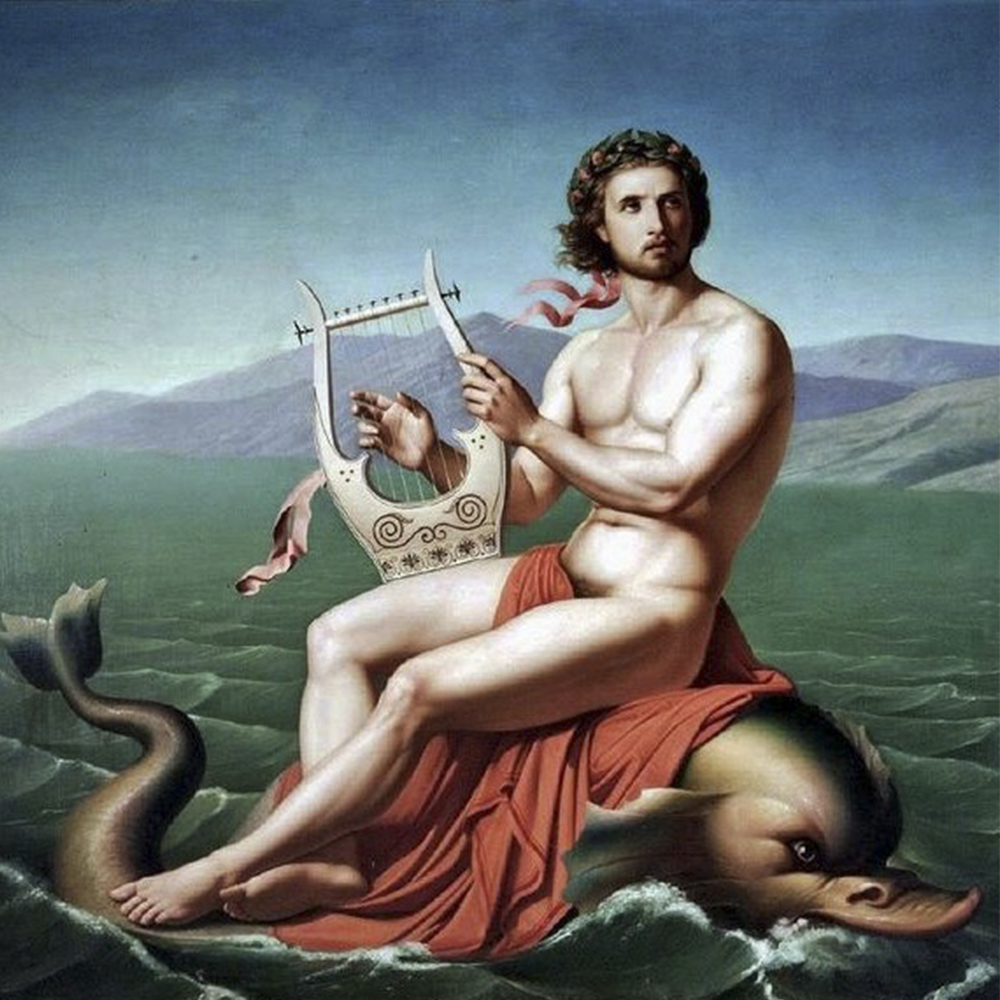
Arion with Lyre Painting
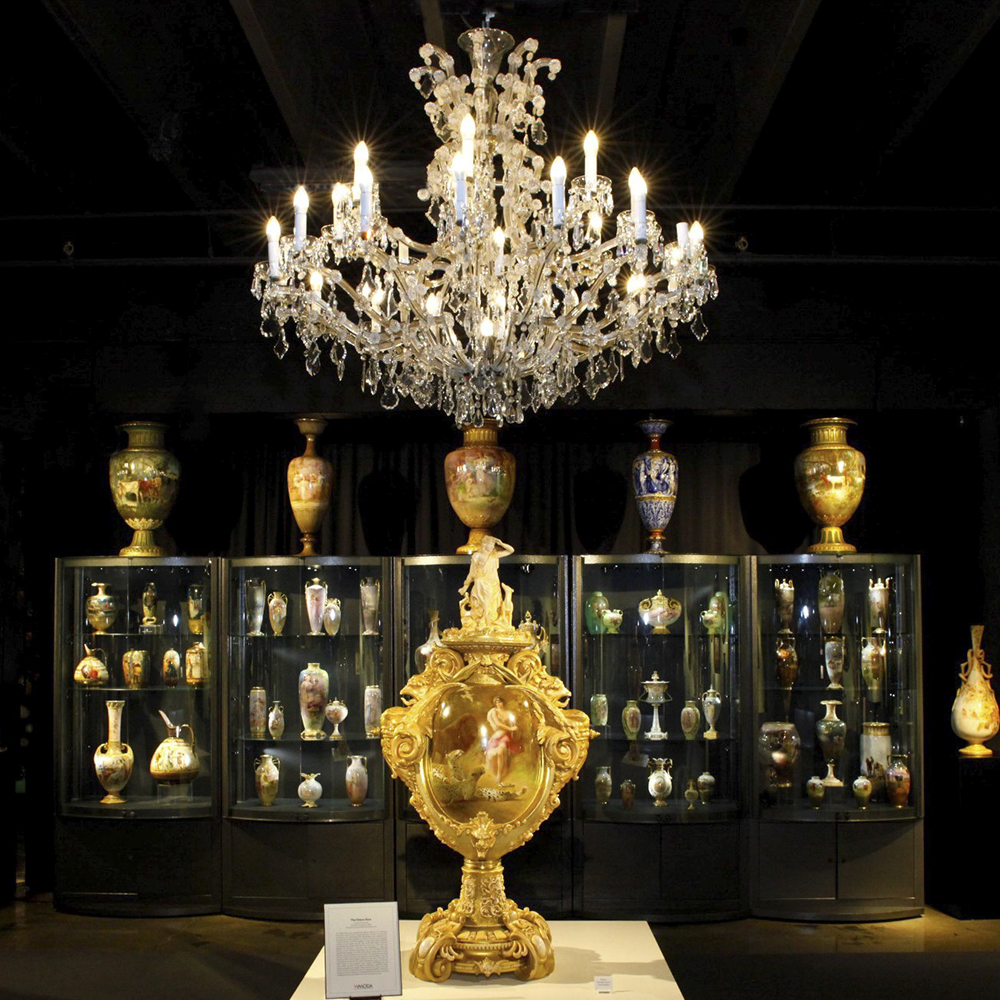
Royal Doulton Diana Vase by J. Hancock
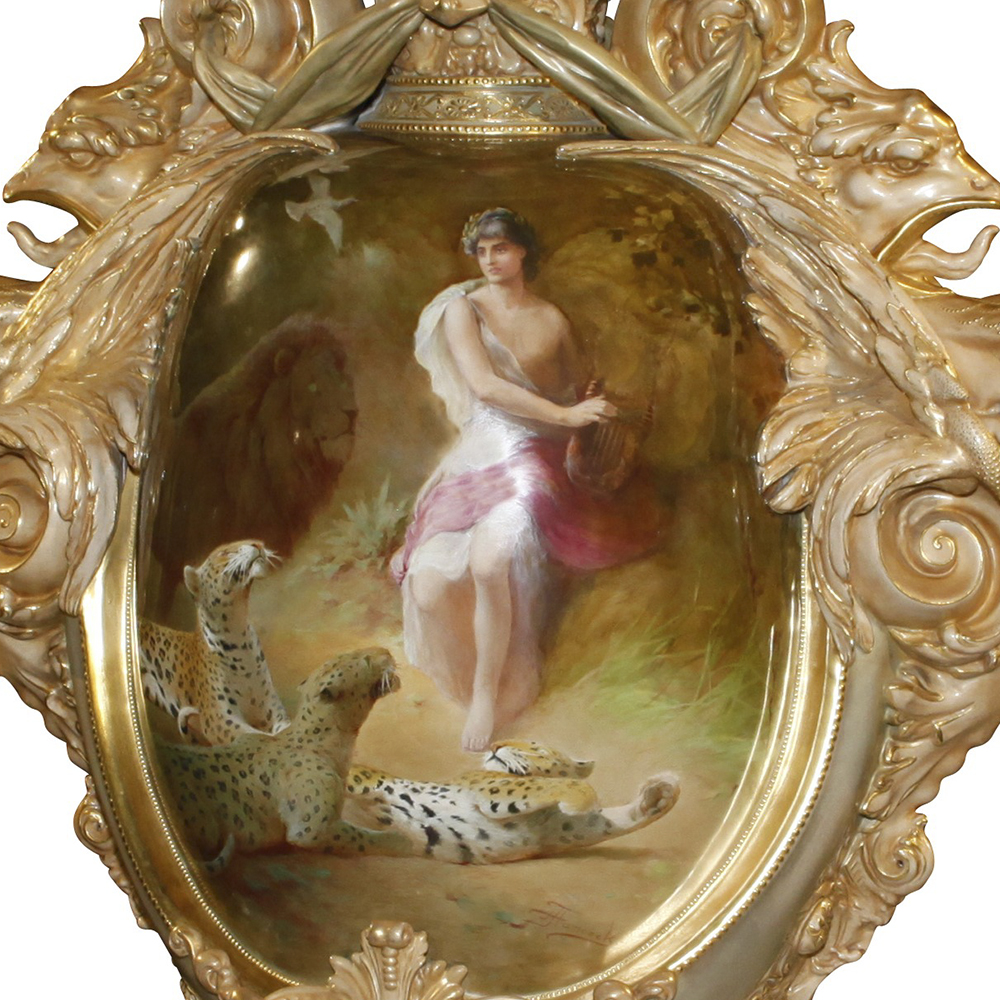
Diana Vase detail
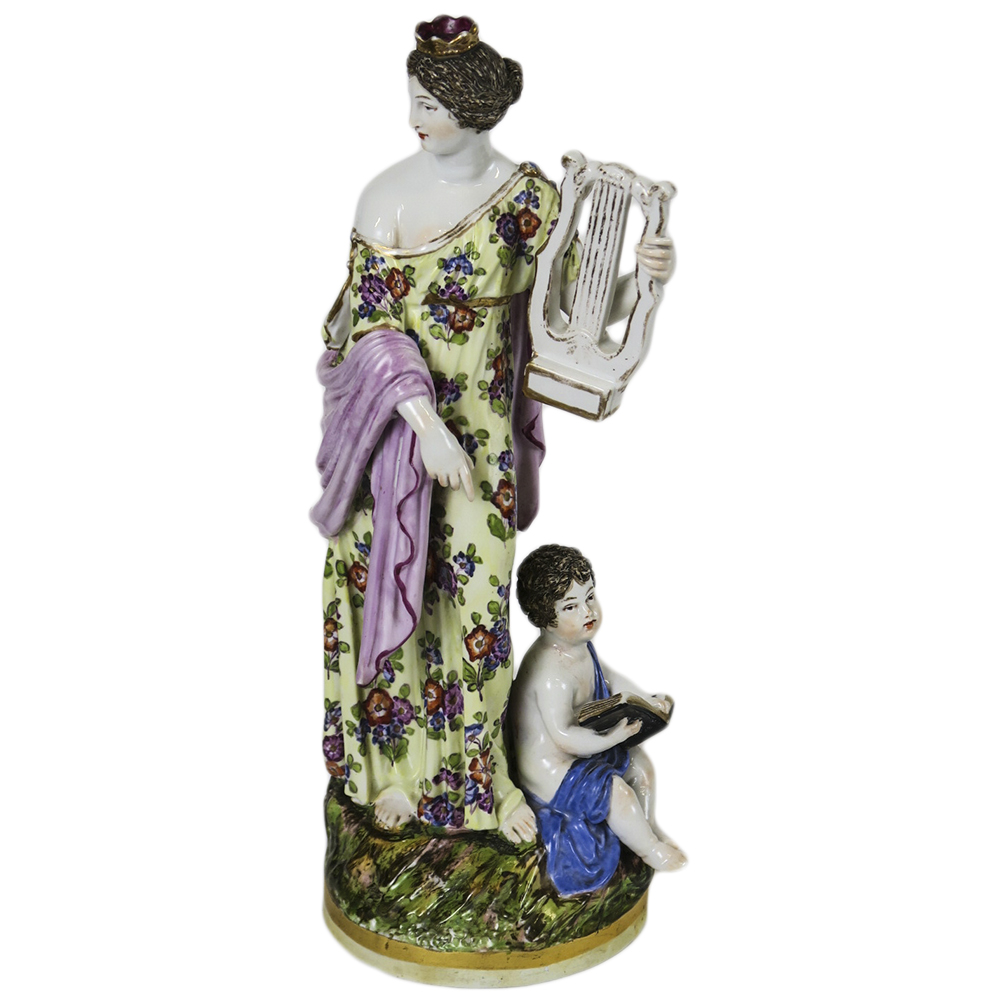
KPM Porcelain Calliope Teaching Orpheus
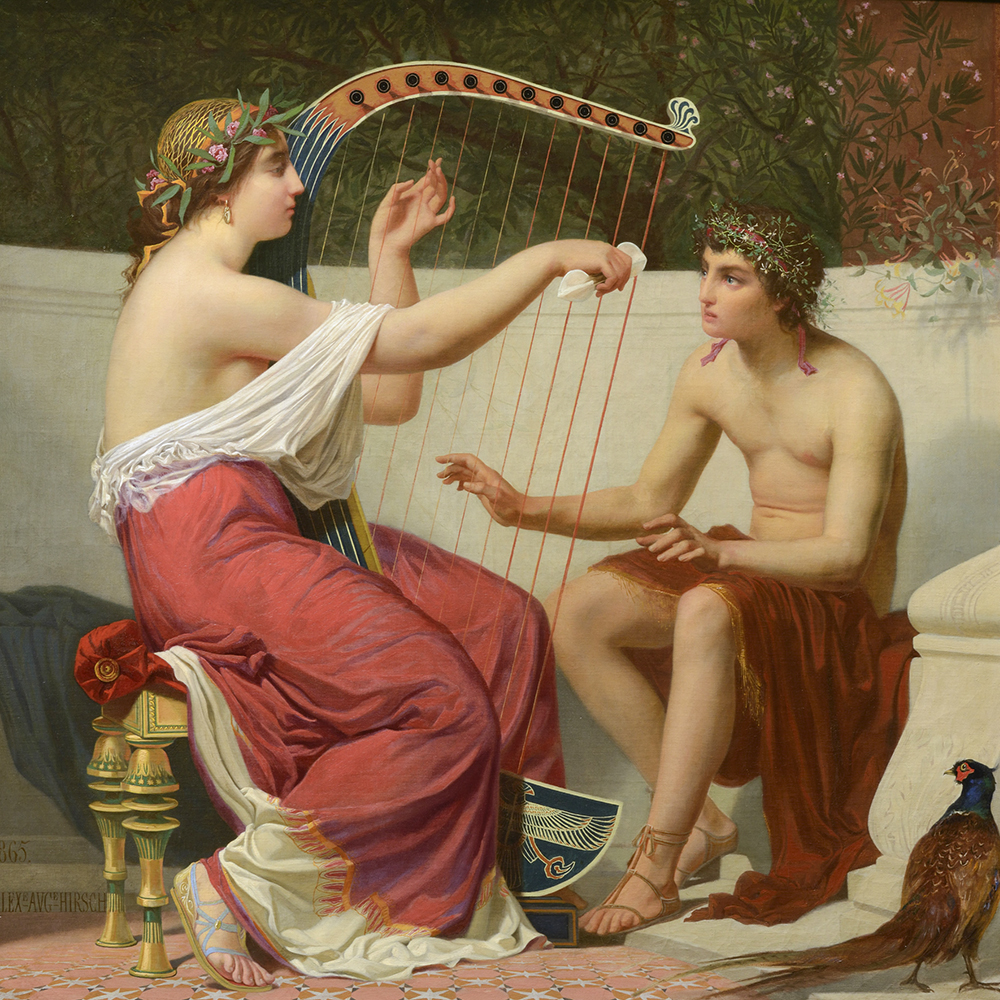
Calliope Teaching Orpheus by A. A. Hirsch
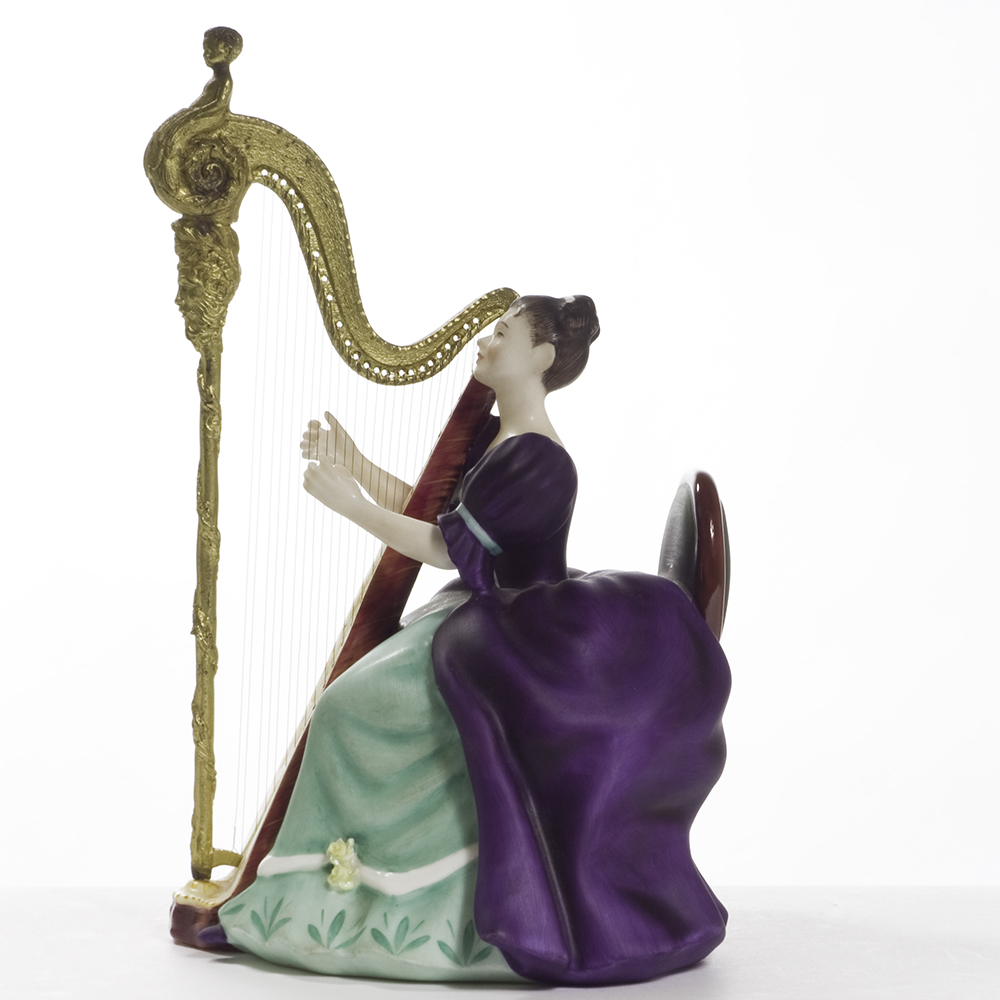
Royal Doulton Harp Player by P. Davies
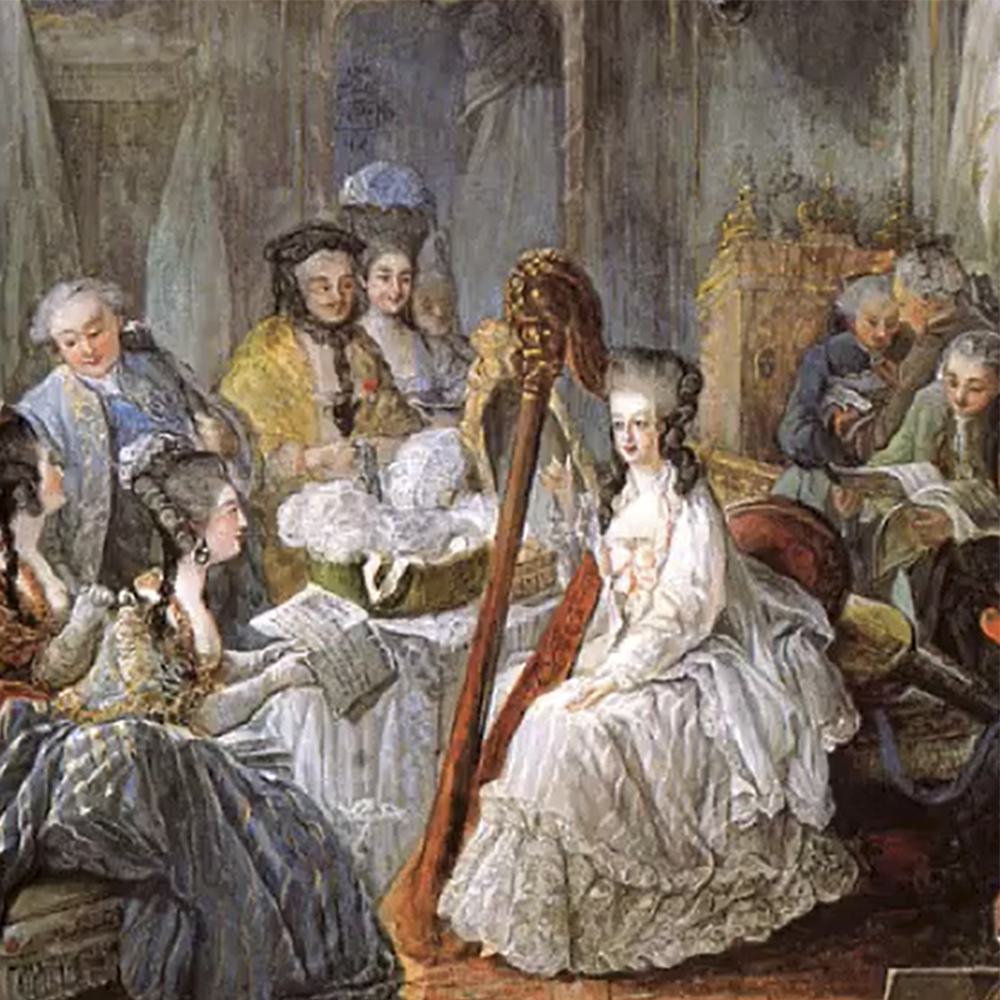
Marie Antoinette Harp
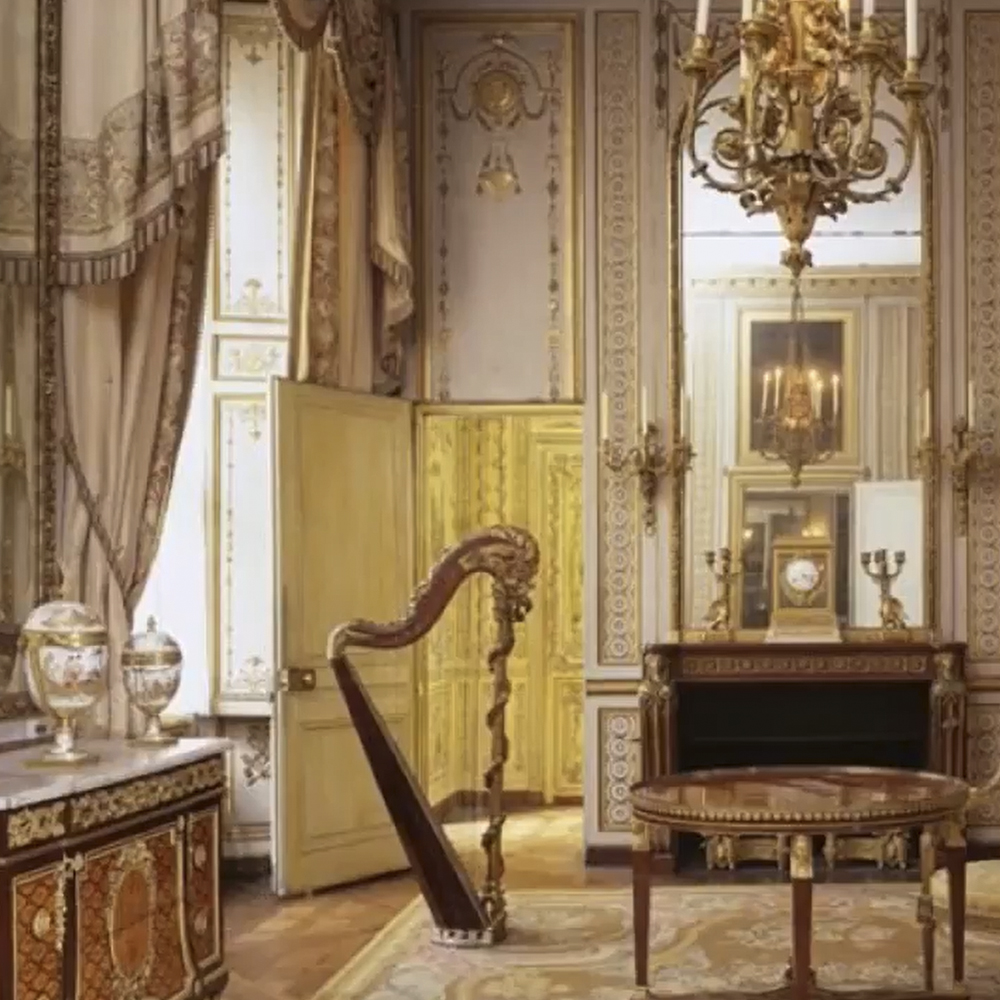
Marie Antoinette Bedchamber Versailles
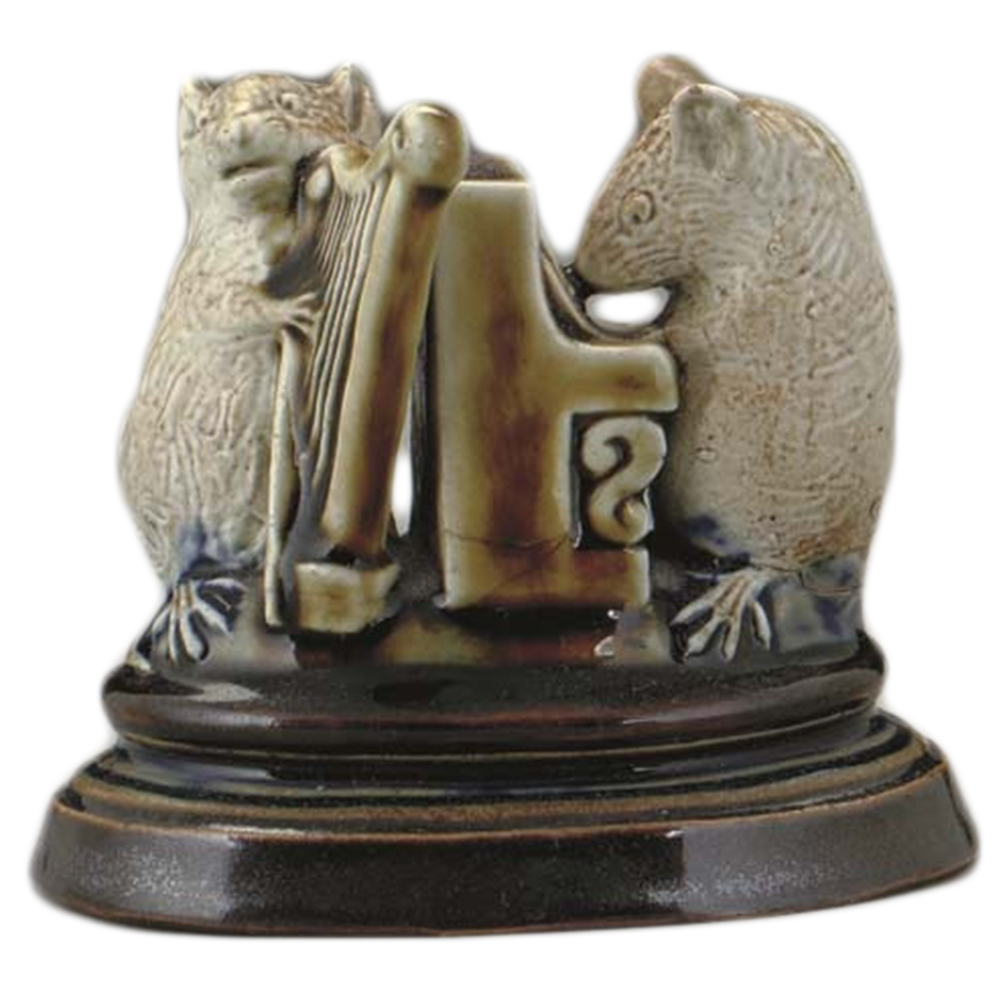
Dooulton Lambeth Piano and Harp by G. Tinworth
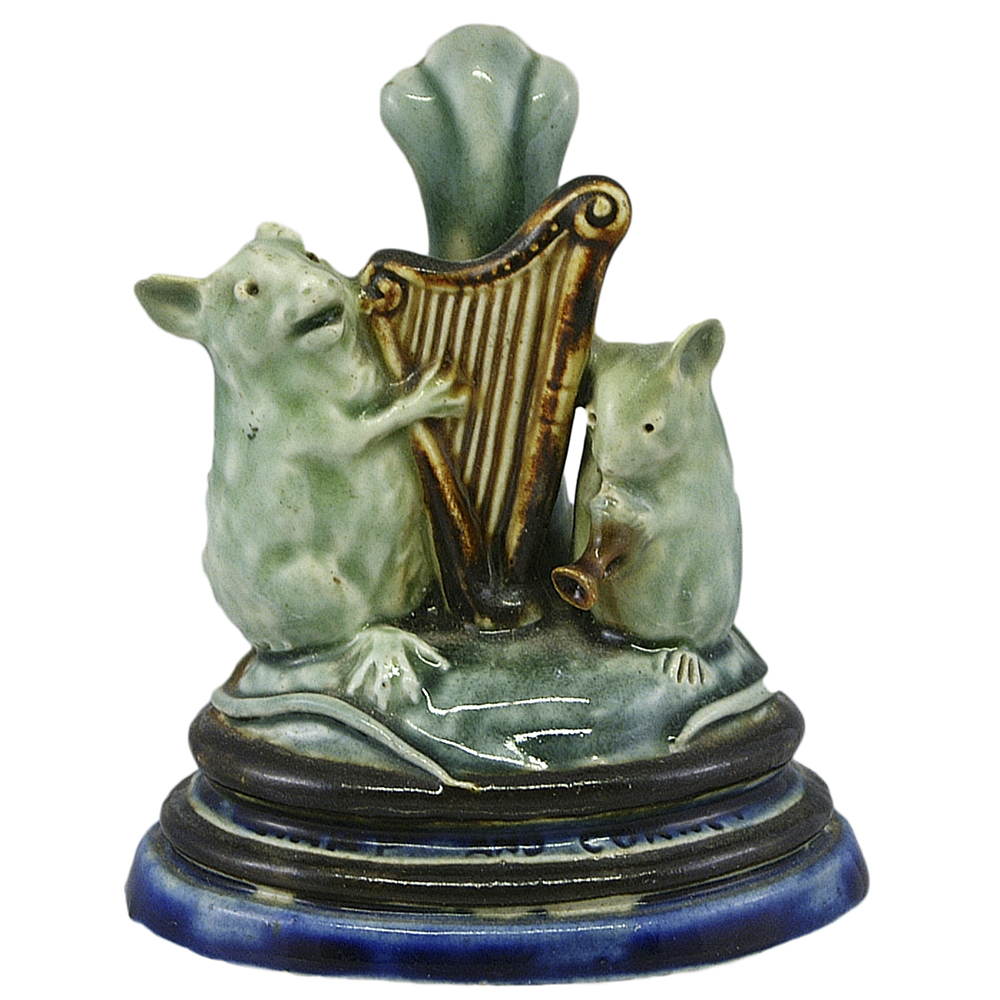
Doulton Lambeth Harp & Coronet by G. Tinworth
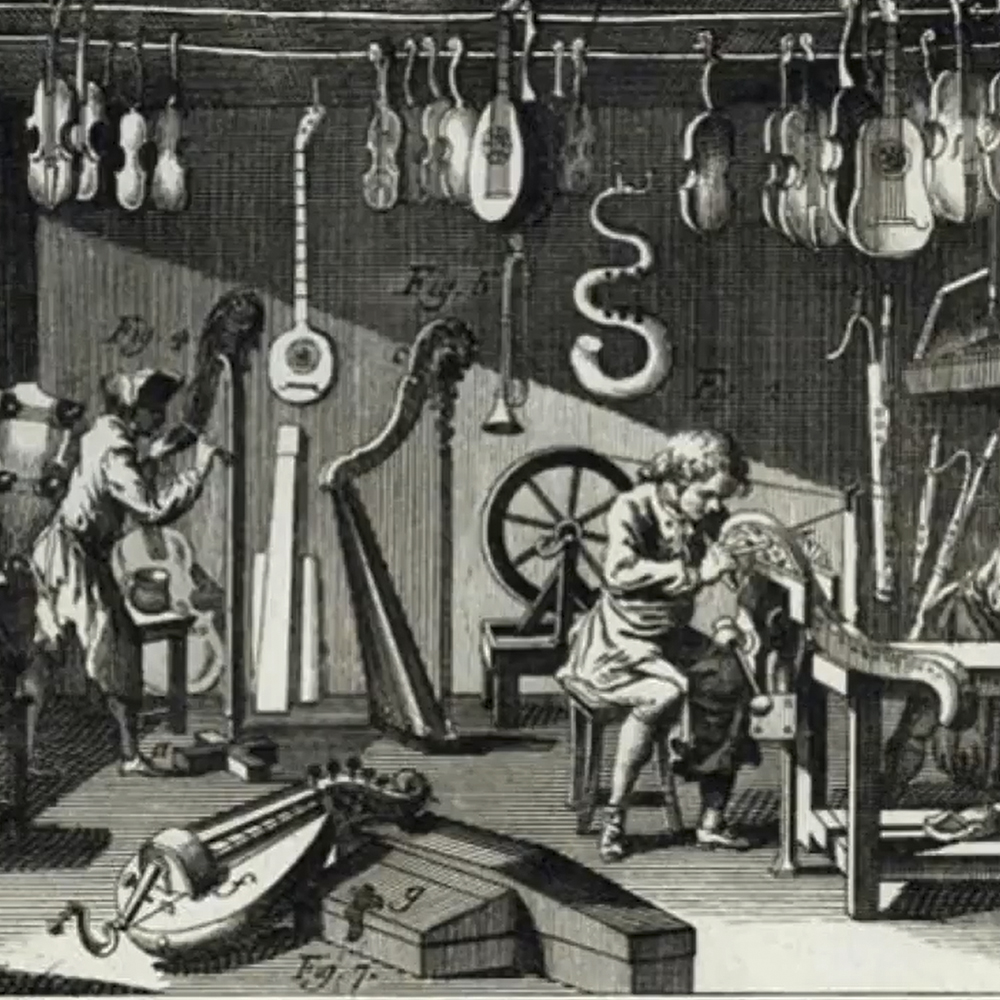
Harp Making
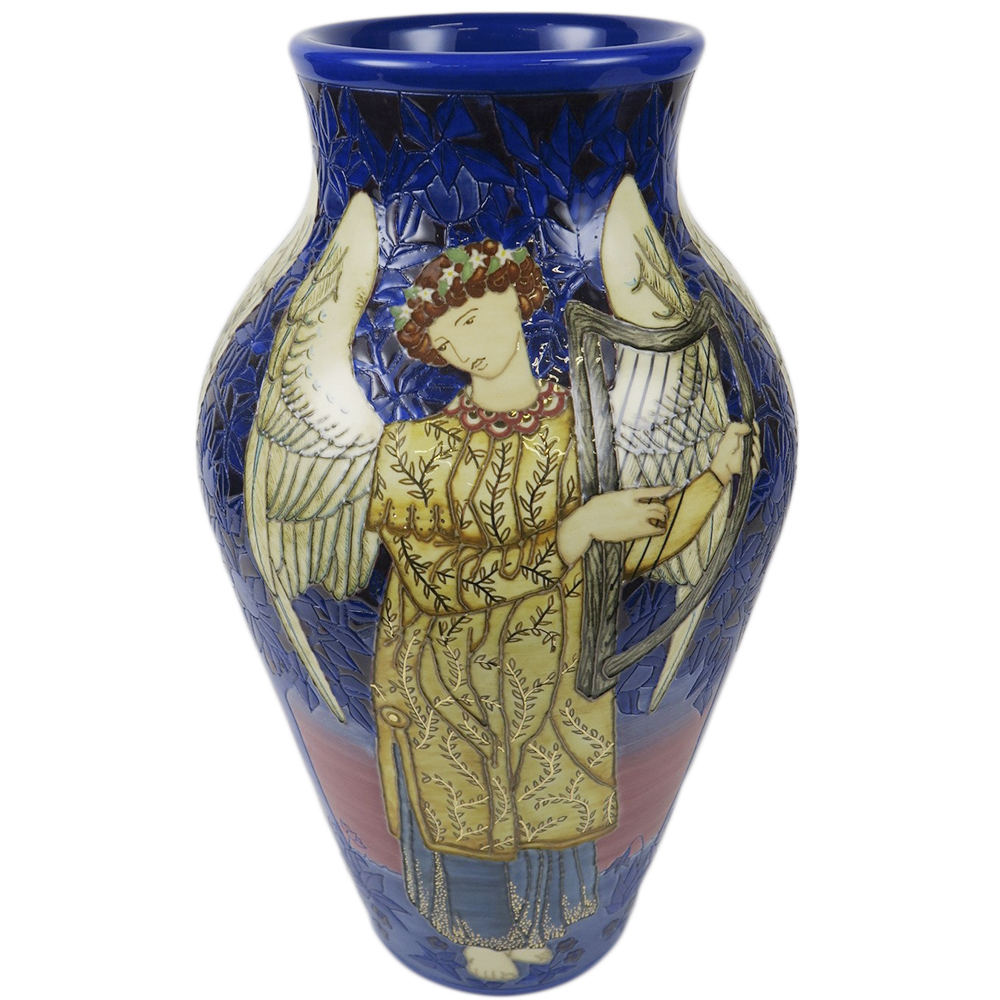
William Morris Angel Vase by S. Tuffin
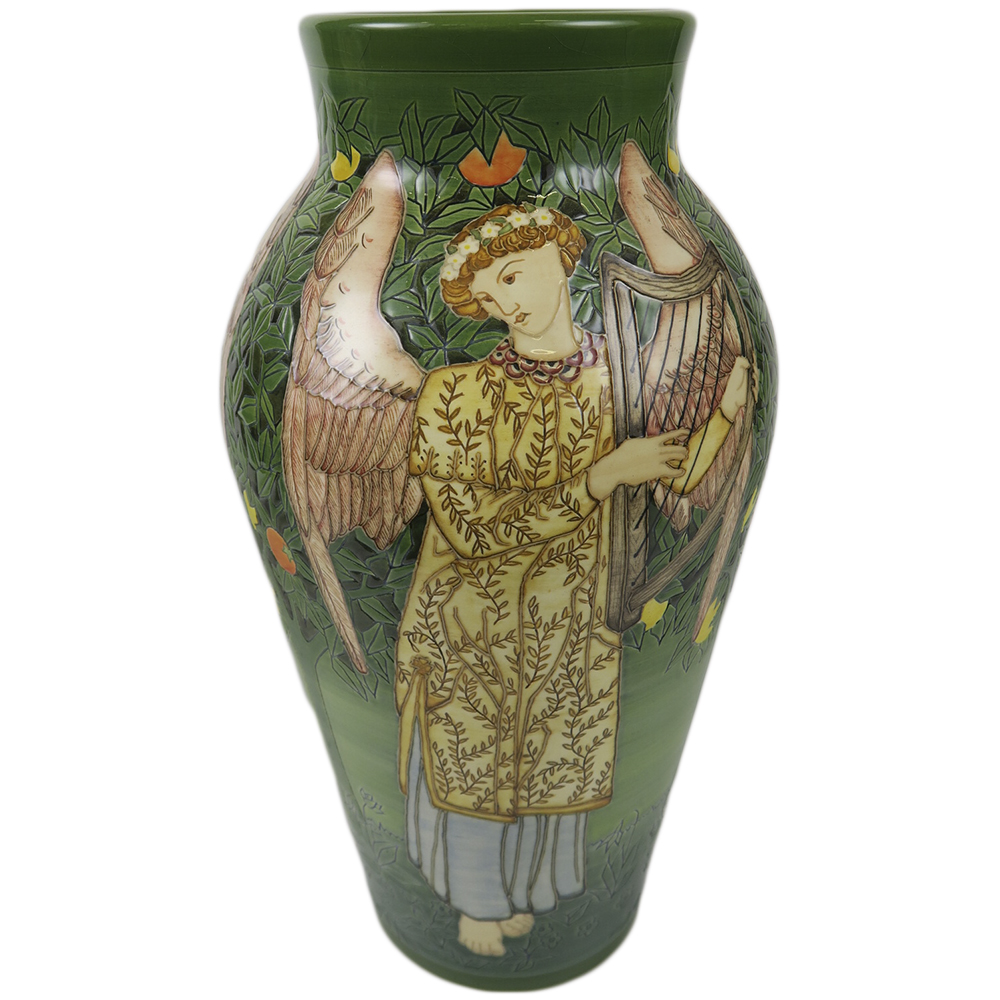
William Morris Angel Vase by S. Tuffin
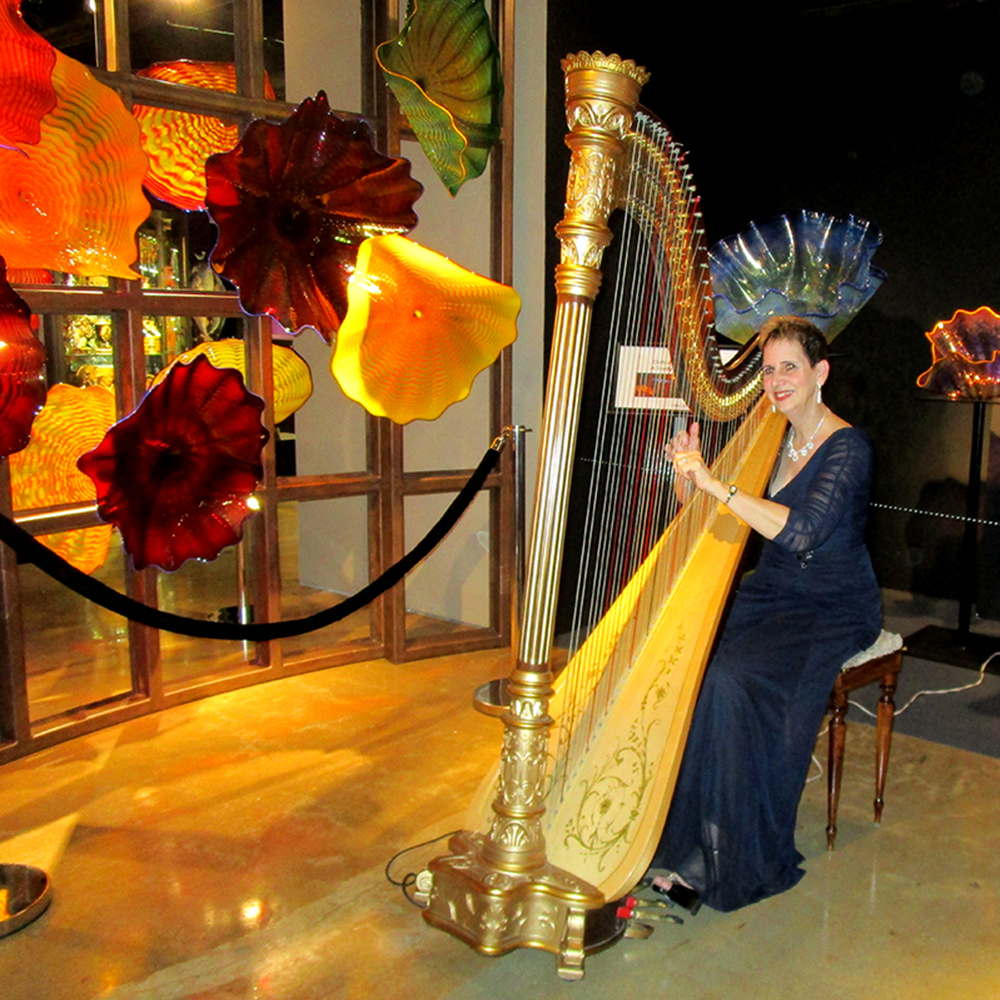
Esther Underhay at WMODA
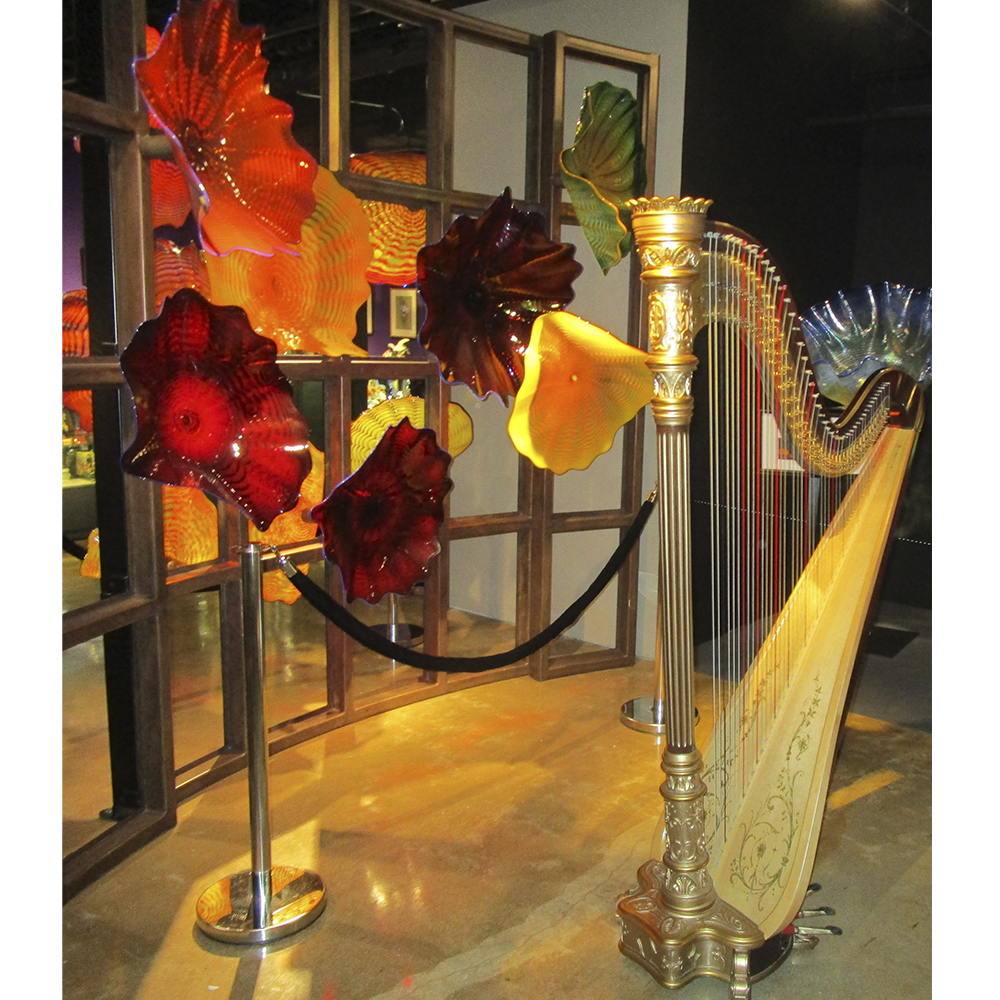
Harp at WMODA
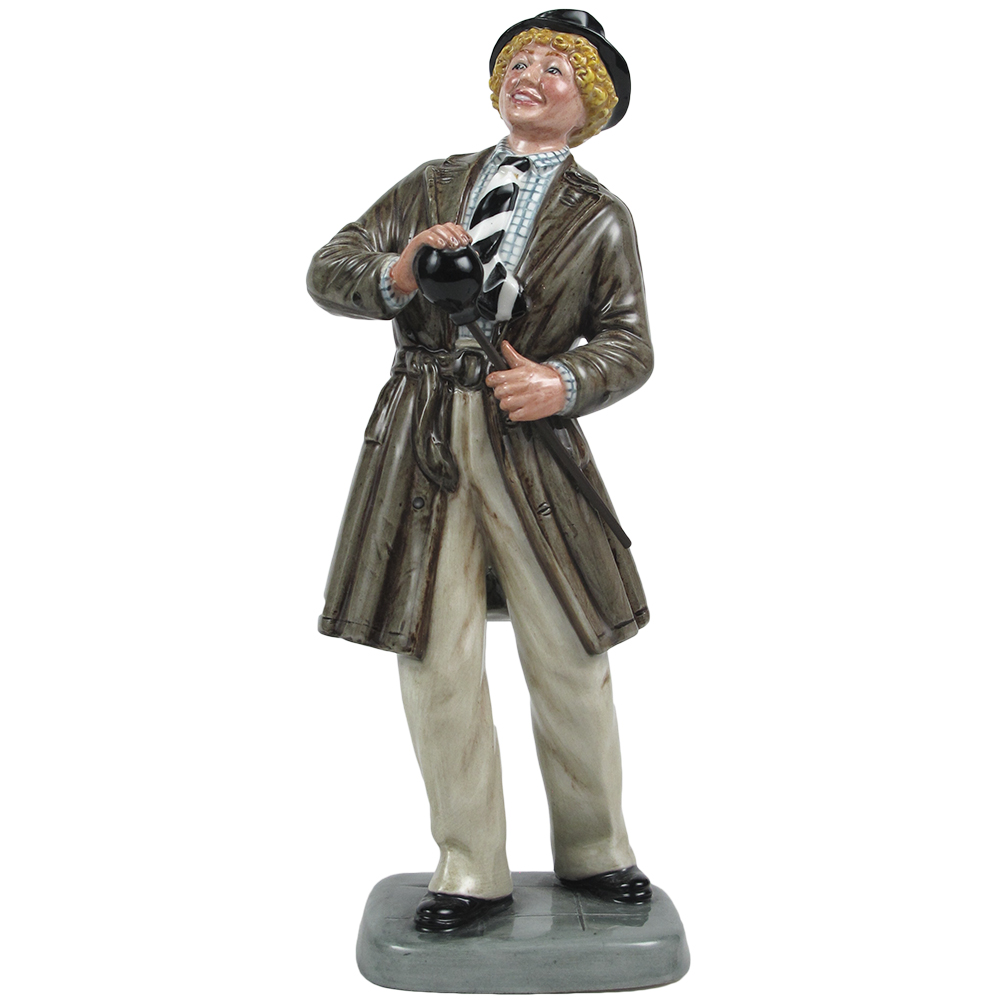
Royal Doulton Harpo Marx
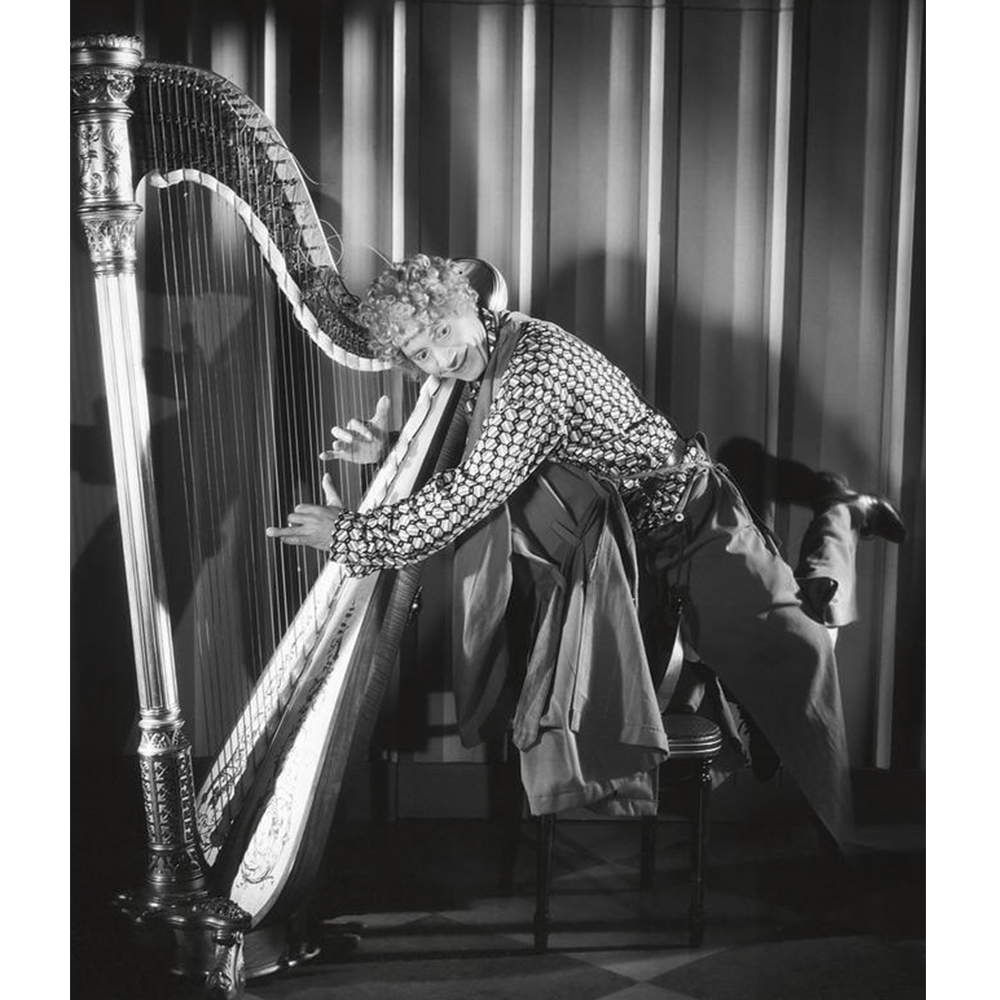
Harpo Marx
